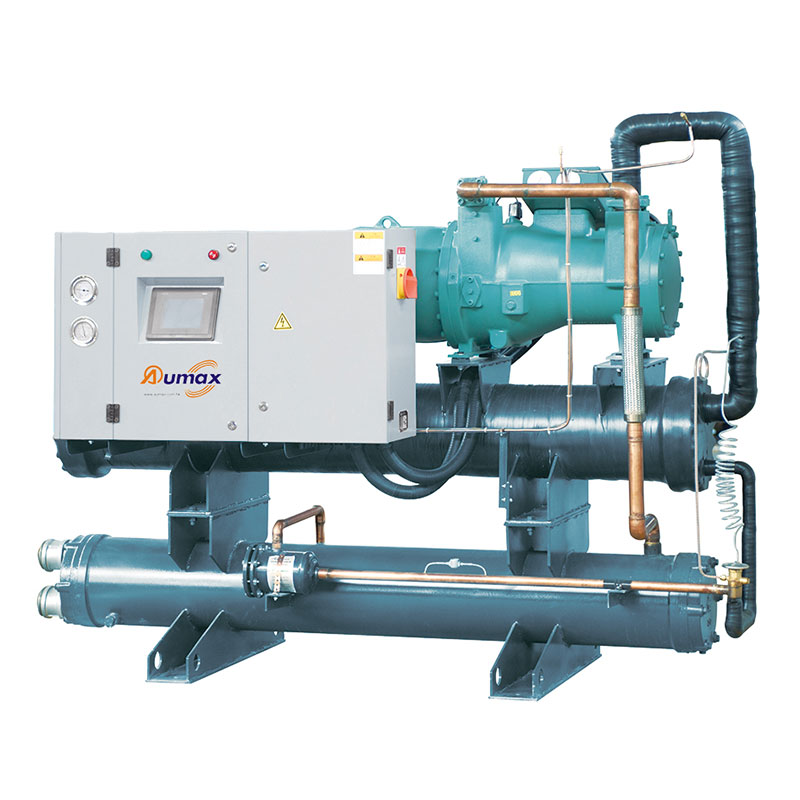Components and operation of a screw-type industrial chiller
2024-03-27
An industrial chiller is a refrigeration system used to cool processes, machinery, or equipment in industrial settings. A screw-type industrial chiller refers to a specific type of chiller that utilizes a screw compressor as the primary component for compressing and circulating the refrigerant within the system. Here's an overview of the key components and operation of a screw-type industrial chiller:
1. Screw Compressor: The heart of a screw-type industrial chiller is the screw compressor. Screw compressors are rotary-type compressors that use intermeshing screws to compress the refrigerant gas. They are known for their high efficiency, reliability, and capacity modulation capabilities, making them well-suited for industrial cooling applications.
2. Refrigerant Circulation System: The screw compressor circulates the refrigerant through the chiller system. The refrigerant absorbs heat from the process or equipment being cooled and carries it away to be dissipated elsewhere.
3. Condenser: After the refrigerant absorbs heat, it flows to the condenser, where it releases heat to the surrounding air or water. In an air-cooled chiller, the condenser typically consists of finned coils through which ambient air is blown by fans. In a water-cooled chiller, the condenser exchanges heat with a separate water loop.
4. Evaporator: Once the refrigerant has released heat, it enters the evaporator, where it absorbs heat from the process or equipment being cooled. As the refrigerant evaporates, it cools the surrounding area.
5. Expansion Valve: Between the condenser and the evaporator, there is an expansion valve or device that regulates the flow of refrigerant into the evaporator. This controls the refrigerant pressure and temperature, ensuring optimal cooling efficiency.
6. Control System: A screw-type industrial chiller is typically equipped with a control system to monitor and regulate various parameters, such as temperature, pressure, and compressor speed. This allows for precise control of the cooling process and energy efficiency optimization.
7. Shell-and-Tube Heat Exchangers (Optional): Some industrial chillers may incorporate shell-and-tube heat exchangers to facilitate heat transfer between the refrigerant and the process fluid. These heat exchangers are particularly common in applications where direct cooling of the process fluid by the refrigerant is not feasible.
8. Pumps and Fans: Industrial chillers often include pumps and fans to circulate the process fluid and facilitate heat exchange in the condenser and evaporator.
Screw-type industrial chillers are commonly used in a wide range of industrial applications, including HVAC (Heating, Ventilation, and Air Conditioning) systems, process cooling in manufacturing plants, plastic processing, food and beverage production, and more. Their efficiency, reliability, and capacity modulation capabilities make them suitable for demanding cooling requirements in various industries.



